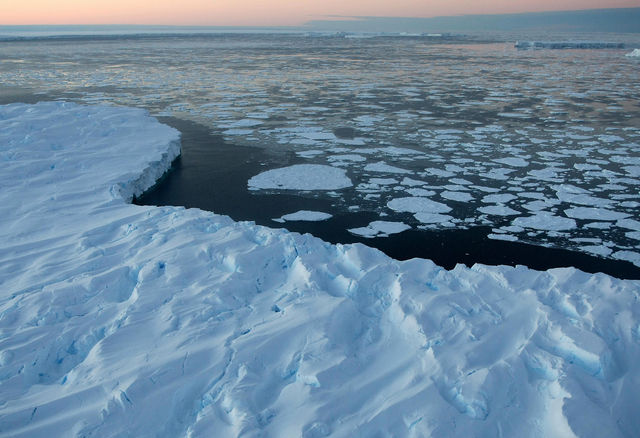Bloomberg News
Antarctica’s Hidden Carbon Stores Pose Warming Risk in Study

The carbon stored under Antarctic ice is on par with the amount held in the northern hemisphere’s frozen permafrost soils and the lower end of estimates for methane trapped under the Arctic Ocean, according to Jemma Wadham, professor of Glaciology at the U.K.’s University of Bristol and lead author of a study in the journal Nature yesterday. Photographer: Torsten Blackwood/AFP/Getty Images
Antarctic researchers found as much as 400 billion metric tons of carbon hidden under the ice sheets, with the potential to seep out as methane and accelerate global warming.
The carbon stored under Antarctic ice is on par with the amount held in the northern hemisphere’s frozen permafrost soils and the lower end of estimates for methane trapped under the Arctic Ocean, according to Jemma Wadham, professor of Glaciology at the U.K.’s University of Bristol and lead author of a study in the journal Nature yesterday.
Related: Arctic Ice Cap Melts to Record Low 'Like a Giant Slushy'
Release of methane, a greenhouse gas 25 times more potent than carbon dioxide, from under melting ice has the potential to create a feedback loop where higher temperatures result in changes that add to global warming.
“There’s a potentially large pool of methane hydrate in part of the Earth where we haven’t previously considered it,” Wadham said in a telephone interview. “Depending on where that hydrate is, and how much there is, if the ice thins in those regions, some of that hydrate could come out with a possible feedback on climate.”
The United Nations Intergovernmental Panel on Climate Change in 2007 estimated the smaller West Antarctica ice sheet is shrinking and larger East sheet growing or stable, concluding that the continental balance ranged from an annual gain of 50 gigatons to a loss of 200 gigatons in the decade through 2003. Its next major assessment of the effects of climate change is due in four volumes from September 2013 to October 2014.
Methane Release
While complete melting of the ice sheets isn’t likely for thousands of years, according to the UN, Wadham said smaller changes may release some of the methane trapped in hydrates.
“That hydrate is stable as long as you don’t change the temperature or pressure,” she said. “In Antarctica, though you might not have a big temperature change at the bed of the ice sheet, if the ice thins, the pressure drops and some of that hydrate could be converted into gas bubbles and then lost.”
The concentration of methane in the atmosphere rose 0.28 percent to 1,808 parts per billion in 2010, the highest since records began, the UN said in November. Scientists including James Hansen have said the decline of Arctic sea ice, which this year has shrunk to the lowest extent on record, may be a harbinger of greater changes, including the release of methane compounds from the permafrost -- or frozen soils.
A study in Nature in December found thawing of permafrost may release the equivalent of 380 billion tons of carbon dioxide this century if the Arctic warms by 7.5 degrees Celsius (13.5 degrees Fahrenheit). That includes large quantities of methane, which may further increase the uptick in temperatures.
Study Countered
The International Energy Agency last year said with current energy policies worldwide, the global average temperature may climb by more than 3.5 degrees, which may translate to an increase of 7 degrees in the faster-warming Arctic. In its 2007 report, the UN observed “a cooling over most of interior Antarctica,” a finding countered by a study in Nature in 2009.
Wadham’s team used computer models to predict how much methane might be trapped under the ice. They also tested sub- glacial soils from Antarctica and the Arctic in laboratory conditions to confirm organisms in the earth below the ice can produce methane. It isn’t yet possible to say over what period it may escape because of the “many uncertainties,” she said.
“All these things throw up more questions than answers initially,” Wadham said. “That provides you with a reason to go to look to perhaps drill into sediments underneath the ice sheet to see if hydrates are there.”
Researchers at Utrecht University in the Netherlands, the University of California at Santa Cruz and the University of Alberta in Edmonton, Canada, also contributed to the paper.
To contact the reporter on this story: Alex Morales in London at amorales2@bloomberg.net.
To contact the editor responsible for this story: Reed Landberg at landberg@bloomberg.net.
@2012 Bloomberg L.P. All Rights Reserved. Made in NYC http://www.businessweek.com